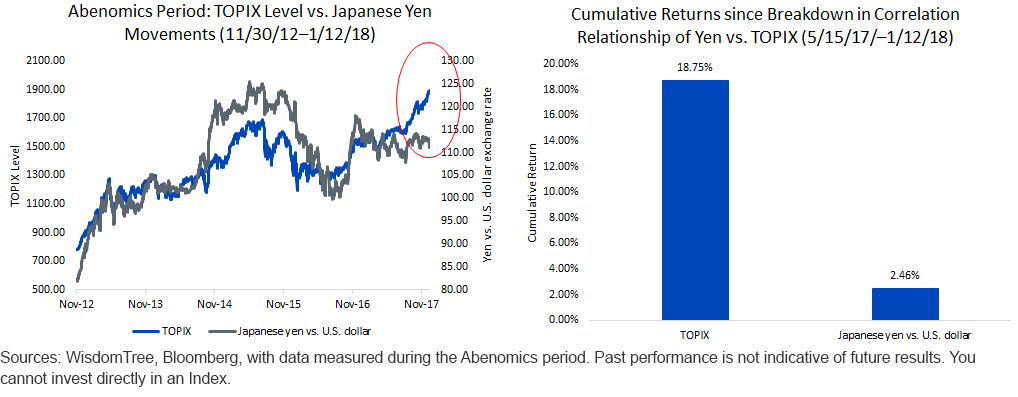As we study the financial markets, we tend to search for relationships that might be connected in order to explain what’s driving returns. While it’s always exciting to find these apparent nuggets of truth, it is sometimes disheartening to recognize that—in most cases—markets will shift in future, unexpected ways, making these relationships disappear.
The relationship between Japan’s equity performance and some of these underlying drivers may be shifting along these lines.
Relationship #1: Inverse Correlation between Equity and Currency Returns
One of the most notable characteristics of Japan’s equities is that they have tended to move in the direction opposite that of the yen currency, meaning the following:
Looking over a long period of time, it is not yet apparent if the regime of “negative correlation” that we’ve seen largely in place since February 2007 has ended,1 but what we’ve seen recently might be an early signal that the yen’s movement is not as strongly determinant as it has been since the start of the Abenomics period.
Since May 2017, the TOPIX Has Risen While the Yen Has Strengthened!

Again, we’re far from thinking that negative correlation has completely receded from view—and if there was a sharp appreciation of the currency, we’d likely see a tough environment for equities again, but divergences from past behavior like this need to be noted and monitored as we move forward.













Leave A Comment